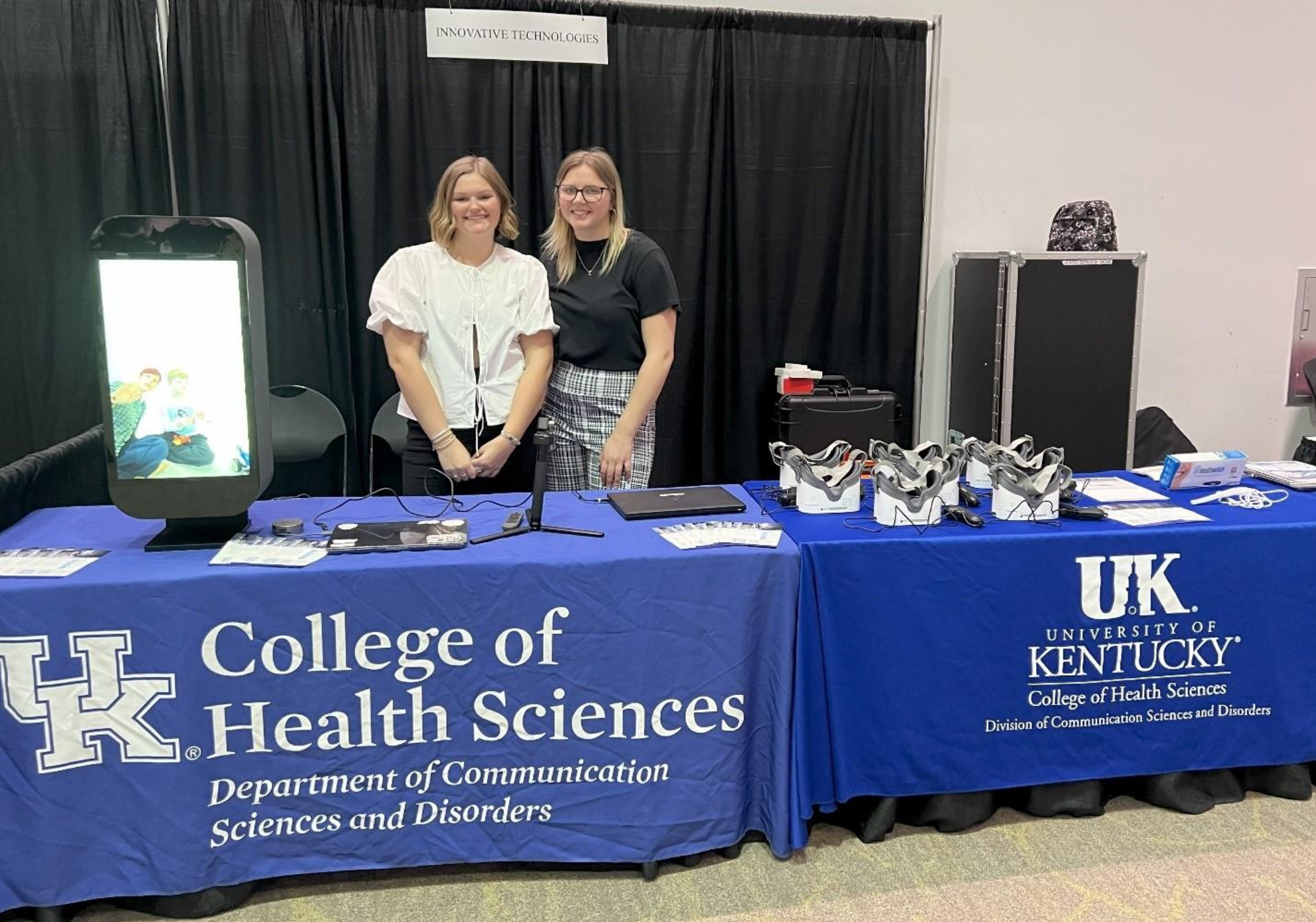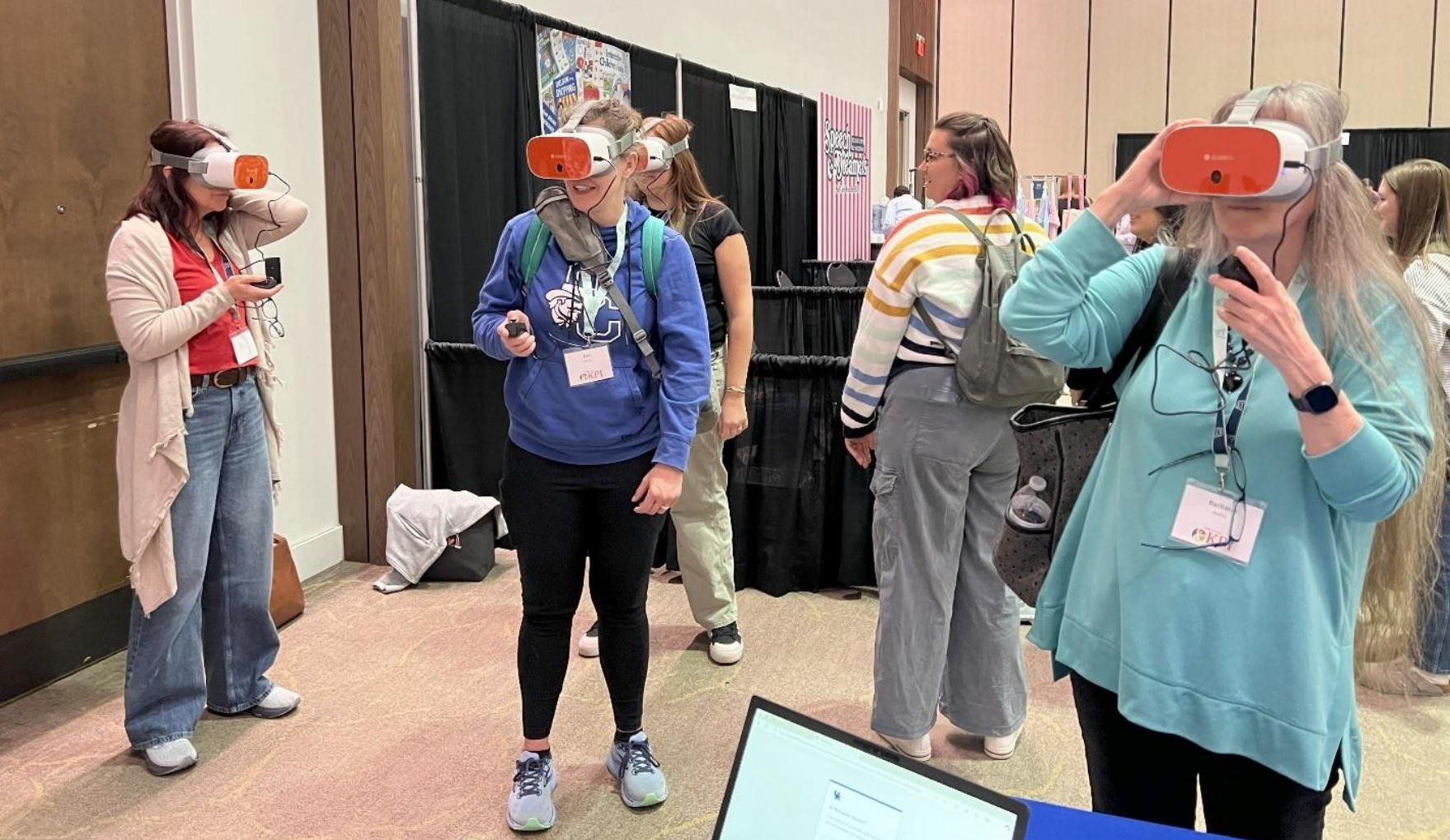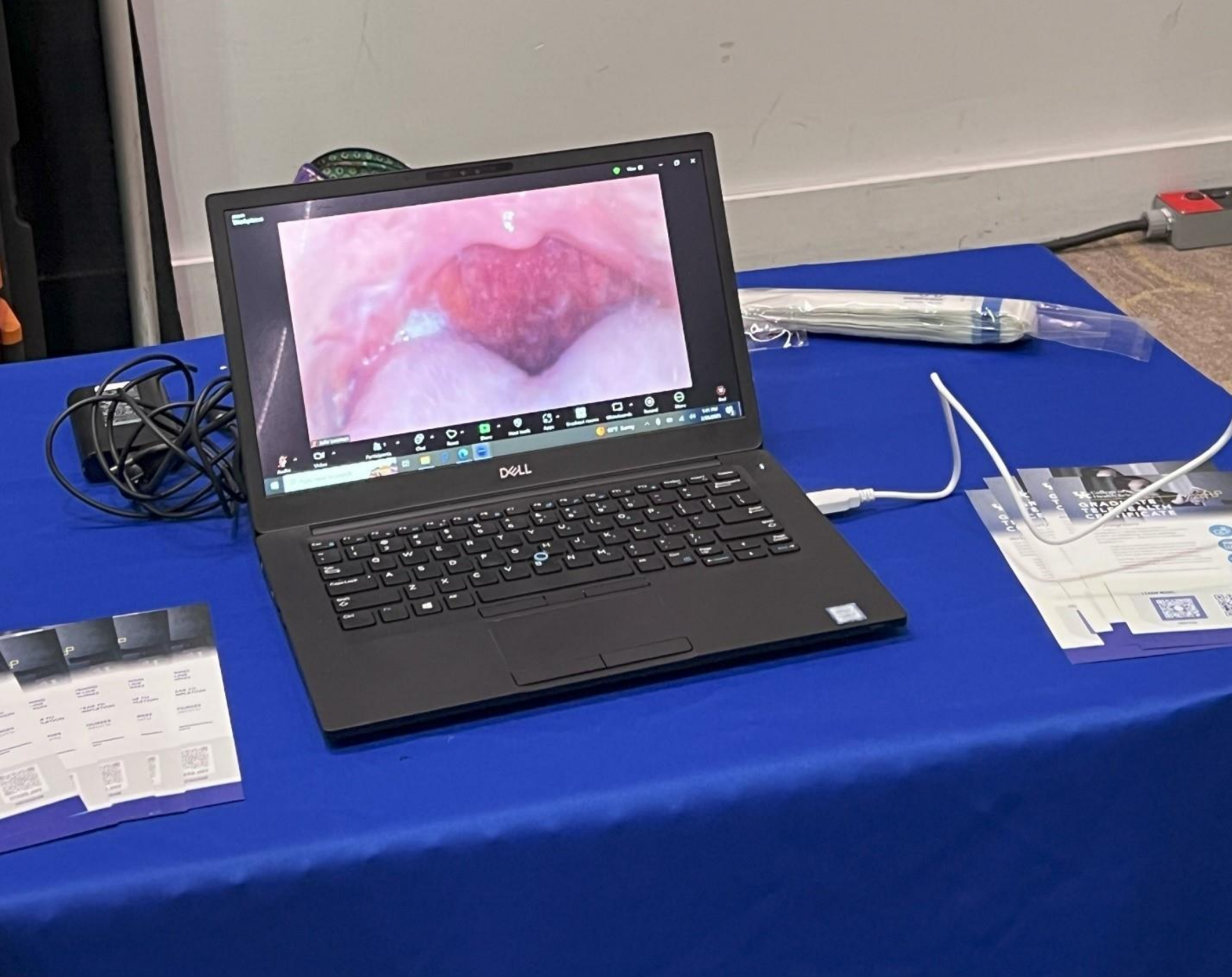At the 2025 Kentucky Speech-Language Pathology Association (KSHA) Convention, Joneen Lowman, PhD, with contributions from Ella Swafford and Bri Slone, showcased “Innovative Technologies in Telehealth for Speech Language Pathology Education.” Attendees gained hands-on experience with cutting-edge technologies that are revolutionizing telehealth and enhancing the educational preparation of students in speech-language pathology and other health professions. The session highlighted how virtual reality (VR), hologram systems, and emerging peripheral devices are advancing telehealth practice and clinical training, while also demonstrating the innovative equipment available in the College of Health Sciences to support students preparing for careers as future clinicians and healthcare professionals.

Hologram Technology (Proto Hologram)
The Proto Hologram system creates three-dimensional images that appear to float in space, offering learners a “whole picture” of anatomy, therapy demonstrations, and client interactions. From handheld and tabletop models to large-scale projectors, holograms make complex clinical concepts more engaging and accessible. Their availability on campus provides students with exposure to emerging tools that are expanding what is possible in education, training, and clinical application.
Virtual Reality (ClassVR System)
The ClassVR platform immerses students in interactive clinical environments, allowing them to practice therapy techniques, experience client perspectives, and rehearse interventions in a safe, distraction-controlled space. VR also supports patient care, from rehabilitation to communication practice and pain management. Access to this technology opens opportunities for innovative learning experiences that prepare students for the future of healthcare.

Telehealth Peripheral Devices
In addition to immersive systems, learners also had the opportunity to explore telehealth-ready peripheral devices that extend the quality and scope of virtual care.
- Intraoral Dental Camera (MouthWatch): This device allows providers to capture clear, close-up images of the oral cavity, enhancing diagnostic accuracy, patient education, and interprofessional collaboration during virtual consultations.
- AI-Powered Webcam (OBSBOT Tiny 2): Equipped with intelligent auto-tracking and high-resolution 4K video, this webcam enhances telehealth encounters by maintaining optimal framing and clarity, freeing clinicians to focus on interaction rather than technology management.

By incorporating Proto Hologram, ClassVR, and innovative telehealth peripherals such as the MouthWatch Dental Camera and the OBSBOT AI-Powered Webcam, students gain exposure to a broad spectrum of technologies that support hands-on, future-ready skill development. These opportunities enrich their preparation as future clinicians and healthcare professionals, while also offering value to current providers who seek to expand their knowledge and stay at the forefront of emerging telehealth innovations. This presentation at the KSHA Convention underscores the growing role of technology in shaping how providers—both present and future—learn, practice, and deliver patient-centered care.